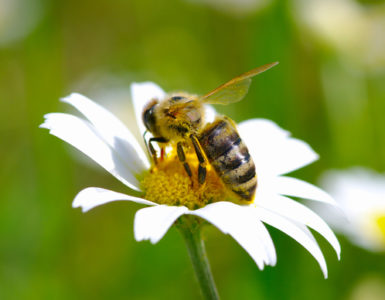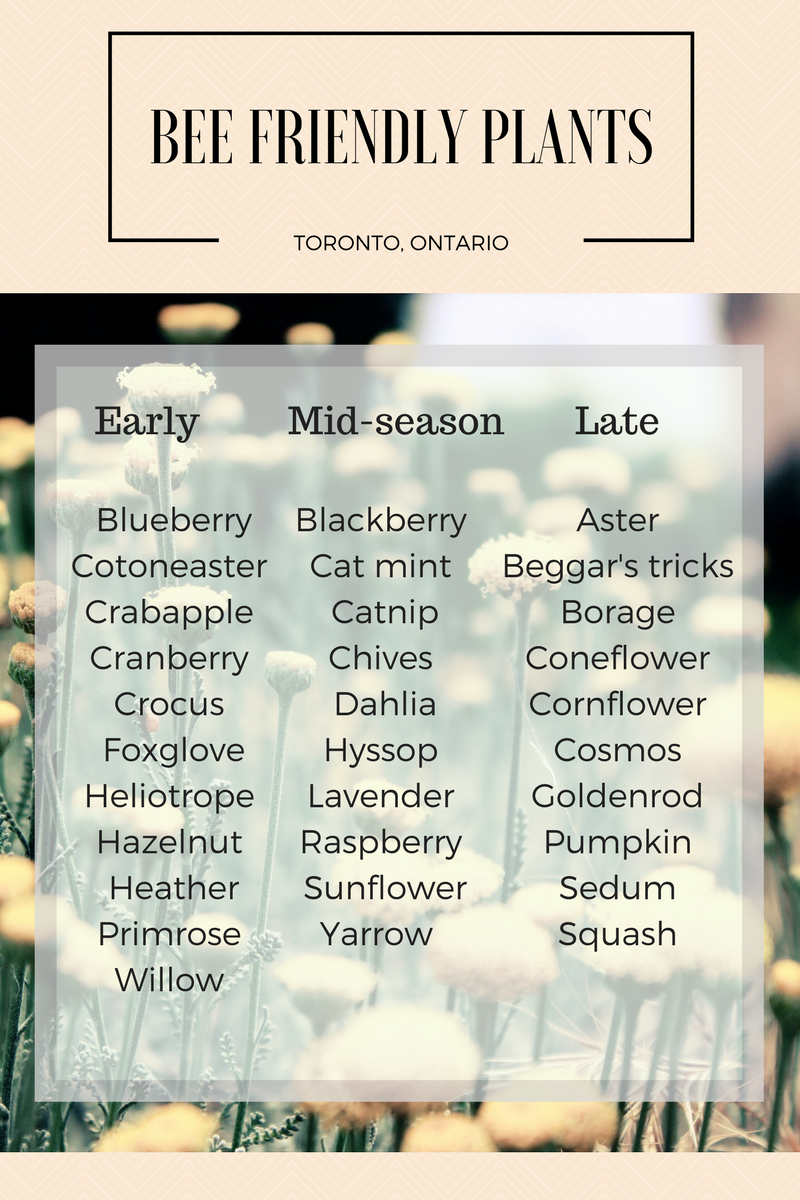
Ontario is home to about 400 different types of bees. These guys make up nearly 70% of the pollination activity in the province. Southern Ontario especially is known as the Green Belt for its ideal conditions for plant and vegetable growth. But what will happen to our beautiful home if there aren’t enough bees to keep the area pollinated? In 2012 honeybees lost 38% of their colonies in Ontario alone. Certain pesticides, especially those used on crops like corn, cause bees to have problems with navigation, learning, food collection and more. Bees are an essential part of keeping our plants and vegetables flourishing. Bee-friendly gardening is the best way to help keep these guys alive.
Pollination 101
Pollination is the process of moving pollen from the male part of the flower to fertilize the female parts. Flowering plants have a number of ways to spread pollen, including wind (corn, wheat, rice) and water (waterweeds, pondweeds.) But the majority of plants depend on pollinators to transport the pollen and ensure the plants get all the nutrition they need to thrive.
The most important pollinators? Bees. Bees are the only pollinators who both collect and transfer pollen from one plant to another. Bees collect pollen as food, and as they travel from plant to plant small amounts of the pollen rub off their bodies and land on the flowers they visit.
How to make a bee-friendly garden
The first thing to think about is having a variety of native plants. Native plants are 4 times fore likely to attract bees than non-native plants. This not only has a great impact on the bees, but it’s ultimately better for the environment too. Choose whatever color scheme you would like – the good news is there are bright and fragrant plants available no matter the look you’re going for.
Most people only think of flowers when talking about a bee-friendly garden. But bees love herbs and vegetables too. In your herb garden, plant parsley, basil, sage and lavender to attract pollinators of all kinds. Heirloom plants are most fragrant and have more accessible nectar than hybrid plants.

Avoid pesticides. These are harmful to bees, monarch butterflies and many birds who are essential to your plant’s lifecycle.
Finally, create a dynamic garden by adding plants of different heights (think trees, shrubs, and flowering vines.) This will create a canopy that gives the bees shelter to nest.
Benefits of a bee-friendly garden
If you want to know the secret to having a green thumb, look at how many bee-friendly plants you have. You can triple the harvest in your fruit and vegetable garden when you have different pollinators to help you out.
Over ¾ of the food we eat need pollinators to reproduce. You contribution to their habitat will have a huge impact on the environment.
Some people think that attracting bees and other pollinators will invite them into their homes. When you create a hospitable environment in your garden, these creates are less likely to travel indoors.
Your bee-friendly garden can be big or small. Even if it’s just a few planters on your balcony, the bees will find a valuable habitat.
*
You can plant bee-friendly flowers from early spring until late fall.
Ask us about creating your perfect bee-friendly garden today.
For more information click here
